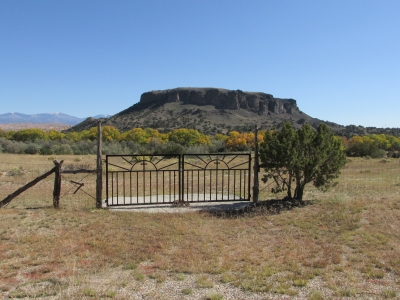
THE UNMUTUAL PRISONER ARTICLE ARCHIVE
TOTAL
IMMERSION PART 4:
FURTHER ADVENTURES IN THE SEARCH FOR CATCH MY SOUL (a.k.a. SANTA FE SATAN)
By Tom Mayer
©2015

Sometimes you can never predict where life will take you. In late 2012, I asked Rick Davy at The Unmutual Website if he would be interested in posting a short article I had in mind about Catch My Soul, Patrick McGoohan's obscure directorial effort that seemed to have vanished without a trace. The idea of writing something about it had been rattling around in my head since the previous summer, when I discovered that the film was still unavailable on video or DVD, and little information could be found on it anywhere. Rick was enthusiastic when he heard about the plan. "Sure," he replied. "Whatever you write, I'll publish."1 So about a month later, I began researching the film without any idea of what I would find -- perhaps a cast list, some vintage reviews, questions online regarding its whereabouts, and little else. I envisioned a 500-word essay covering the basic information about the movie, concluding with an open-ended statement along the lines of, "I wonder if this will ever be found?" Overall, it seemed like an easy project.
Today, after three years, several hundred emails, 7,000 miles of traveling, and 32,000 words of research, this "easy project" finally appears to be finished. I had no idea of the amount of time, effort and distance this endeavor would involve, including five major trips that took me from New Mexico to North Carolina to Washington DC to Connecticut. Even more amazing is that after all this, the film is now available for the world to see thanks to a wonderful new DVD/Blu-ray release. Quite simply, the entire experience surpassed any expectations I had when starting out. My initial period of research occurred between January and July of 2013, which culminated in the first two parts of this article. When the completed piece went online that August, I felt the story had reached a satisfactory conclusion and that many months (or even years) would pass before any updates were needed. Almost immediately however the wheels began to turn again. . .
SANTA FE
The next major development
came while interviewing Doug Magnus, who was a crew member and photographer
on the film. He is now an artist and jeweler still living in Santa Fe, and during
our conversation, he invited me out to the area and offered to show me around
the filming locations. This was an opportunity too good to pass up, since I
would be able to see for myself where the movie was made and could experience
the atmosphere of the region firsthand. I accepted Doug's offer and we scheduled
a visit for that coming fall – appropriately, the same time of year that
the cast and crew of Catch My Soul were filming there forty-one years earlier.
On Saturday, October 19, 2013, I landed at Albuquerque International Sunport,
then rented a car to drive the remaining hour north to Santa Fe. This was my
first visit to the area, so I was quite impressed with the wide-open scenery,
stunning landscape and high altitude. McGoohan himself once remarked that, "The
air is like champagne there." I could now understand why the place had
become a haven for many famous people over the years, including artist Georgia
O'Keefe, actor/director Dennis Hopper and Game of Thrones creator George R.R.
Martin.
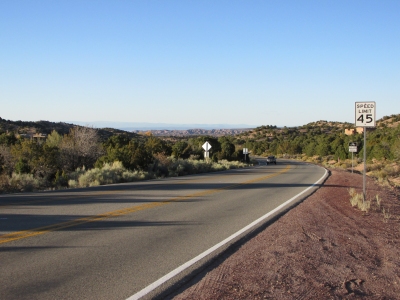
I met Doug the next day at his studio near the historic downtown area, where we hopped into my rented Prius and proceeded to spend the afternoon seeing the sites. Throughout our journey, he reminisced about what the region was like four decades earlier when the film was being made. According to him, Santa Fe was "another time, another planet," even as late as 1972. "It was very isolated," he remembered. "You had telephone, TV, radio, and that was about it." It wasn't difficult to imagine McGoohan and producer Jack Good, far removed from their British roots, attempting to realize a unique cinematic vision amid the mesas, scrubs and wide open skies. Good was so taken with the region in fact that he ended up living there for another thirty years before moving back to the UK in the early 2000s.
After a delicious lunch of authentic New Mexican cuisine at Gabriel's Restaurant in Pojoaque, Doug then showed me specific places where the movie was filmed. First up was the site of the nighttime party scene, located off Highway 285 on the former Bert Brown Ranch. All traces of the church and commune had long since vanished, while several houses had been built up to the edge of the site over the years. Much of the spot was still recognizable though, as I was able to match up the cliffs in the distance with some of Doug's photos from 1972. Interestingly, he said that another movie had been made here -- the bizarre acid-western Greaser's Palace was filmed on the same spot a year before Catch My Soul. (Coincidentally, both films feature a structure built on the same hill that is eventually destroyed.)
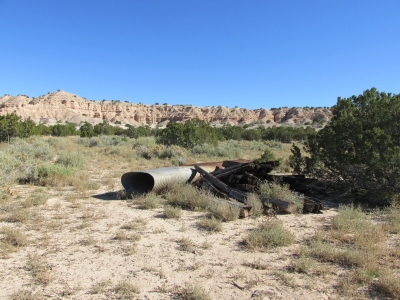

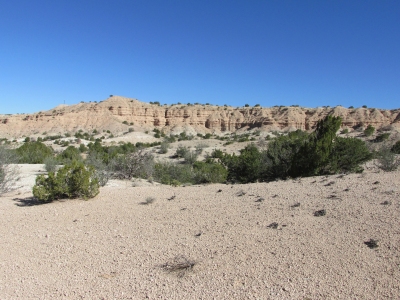
We next visited Othello and Desdemona's mission, which today is a functioning church on the San Ildefonso Indian Pueblo. The building can be seen from Highway 30, with the ominous "Black Mesa" looming in the background. This is truly an impressive location, and it's easy to see why the majority of the film was made at this spot.
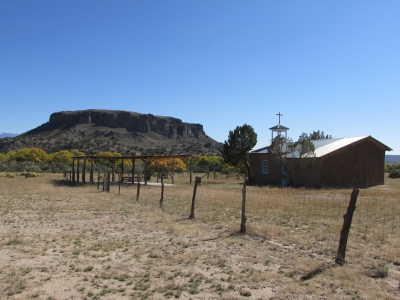
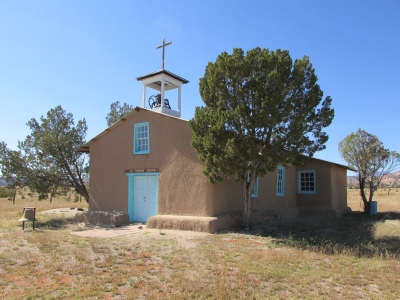
The third location we saw was the shore of the Rio Grande where the opening baptism scene was filmed. The spot can be seen on the right looking south from Highway 502 (we were unable to hike down to the actual site, due to much of the area having since become overgrown with brush).
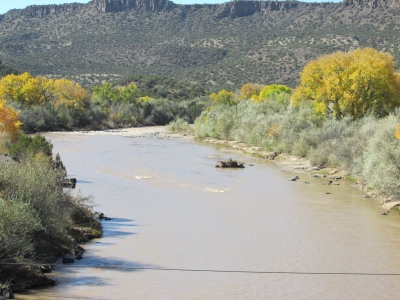
We ended the afternoon back at Doug's studio, where he surprised me by digging out the photos he took during the making of the film -- four rolls’ worth! I was familiar with a few of them from his website, but it was amazing to now see the entire collection. The black & white images included Tony Joe White playing guitar during the party scene, Richie Havens and Season Hubley walking their mule across the desert, Lance LeGault dancing along the cliffs to get himself into character, and several striking shots of Iago's mysterious black bus. The opportunity to see these images made for the perfect conclusion to our visit.
My local investigation into the film wasn't over yet. I had another meeting scheduled the following day that involved an interview with Raleigh Gardenhire, who played Iago's sidekick in the film. A former president of the New Mexico chapter of the Screen Actors Guild, Raleigh was involved with just about every major film produced in the area from the early 70s to the early 80s. He appeared in small roles in Showdown (1971), Butch & Sundance: The Early Years (1979), and Timerider: The Adventure of Lyle Swann (1982). I had called him up out of the blue a week before I left for Santa Fe, and he was fascinated to hear about my research. "Wow," he said, "I haven't thought about Catch My Soul in thirty years!" He kindly agreed to talk with me while I was in town.
We met for lunch in a downtown café where, for over an hour, he shared his memories about the film. Raleigh said he landed the role when Good and McGoohan called him into an audition and virtually hired him on the spot. His main memory of that meeting was how the two men's eyes widened with excitement as he accepted the part. "I thought to myself, 'What did I just fall into?’", he said, laughing. He also recalled how, during the filming, several scenes were improvised in an unexpectedly laid-back atmosphere. "This was only the second film I'd ever been on," he explained. "I'd show up [each day] not having any idea what we were going to do. All of a sudden Patrick would say, 'All right, let's try this' -- and we'd go do it. Then he'd say, 'No, let's try something else. I don't like that,' -- and we'd end up changing a whole scene." He remembered his colleagues' personalities were varied as well, with Good being "very talented and a lot of fun", LeGault "pretty intense and a little withdrawn", McGoohan "moody and strange", and Tony Joe White "just really down-to-earth." Raleigh then recalled running into Good years later in downtown Santa Fe, sometime in the late 70s. After catching up for a bit, Good surprised him with an invitation: "Come on," he said, "Let's watch the film." They went back to Good's house, and using a white sheet as a makeshift movie screen, proceeded to watch the producer's personal copy of Catch My Soul. "That was the only time I ever saw it," Raleigh said. "I remember it looked old and grainy even then." As we wrapped up our interview, he reflected on the film, summing it up with a smile as, "Basically another paycheck -- and a big party with a bunch of rock stars!"
Appropriately, the week I spent in New Mexico coincided with another pop culture event, albeit on a larger scale. It had been just three weeks since the five-season run of Breaking Bad had ended, and viewers were still recovering from the climactic final episodes. The series was set and filmed in Albuquerque, and there was much local media coverage about fans continuing to visit the filming locations. Being an admirer of the series myself, it worked out perfectly that I was able to divide my trip between the Santa Fe locations for Catch My Soul and the Albuquerque sites for Breaking Bad.
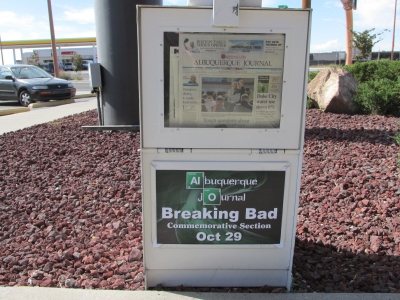
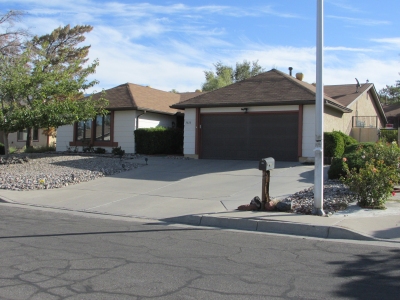
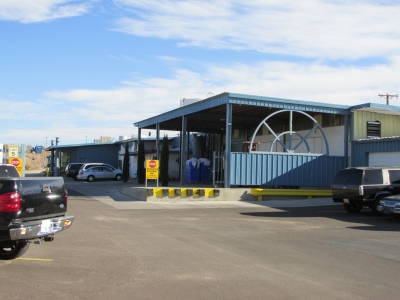
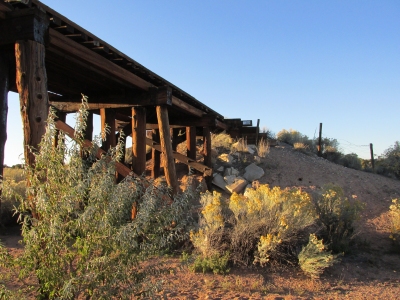
WASHINGTON D.C.
The next notable event came the following year, after the successful screening of Santa Fe Satan at the RiverRun Film Festival (recapped in Part Three of this article). The event was organized by David Spencer, Senior Film Curator of the North Carolina School of The Arts, who I had met the year before when he screened the film for me as I was writing the first two parts of this article. As we were catching up during an interview after the RiverRun screening, he told me about his recent discovery of a 16mm copy of the original Catch My Soul in the collection of the Folger Shakespeare Library in Washington DC. After marveling over the good fortune of finding yet another copy of the film, we came up with the idea of traveling to the capital to view this "new" print. This would be the perfect opportunity to discover once and for all how many differences (if any) existed between the original and the re-release. By this point, we had seen the film about five times between us, so we felt familiar enough with it to compare the two versions.
It took some maneuvering around our respective jobs and schedules, but we managed to confirm a time later that summer to meet in Washington. In the meantime, David made the necessary arrangements for us to visit the Folger Library. To gain access to their archives, one needs to apply and qualify as a "Reader," that is, someone conducting serious or professional research on an aspect of Shakespeare or his works. Thanks to a helpful Letter of Recommendation by film archivist and longtime friend Bradley Reeves, I was soon accepted as a Reader by the Library. I eagerly began making preparations for the trip, as well as for yet another opportunity to see the film! David informed me that we would be viewing the print on a Steenbeck, a table-sized editing machine where the film is threaded through a system of spools and projected above on a small screen.
In the midst of all this, I heard from Rick at The Unmutual, who said that someone had seen my articles on the website and was asking to be put in touch with me. The inquiry was from David Schiller, retired musicology professor at the University of Georgia, whose wife, Christy Desmet (also a professor at UGA), is co-editor of the online Shakespearean journal, Borrowers and Lenders. The two were co-authoring a chapter on musical adaptations of the Bard's work for the forthcoming book, The Shakespearean World. Their essay, "Shakespeare and Music," discusses various musical appropriations of Othello and includes a reference to Catch My Soul. "It may not seem like much," David said, "but when you think of all the music that has been inspired by Shakespeare over the centuries, it's actually pretty amazing that Catch My Soul has gone from being lost to being acknowledged." In a timely coincidence, I learned that Christy would be at the Folger Library at the same time David Spencer and I would be visiting there. She was spending the summer in Washington as a Resident Scholar at the Folger Teaching Shakespeare Institute, and since we were all interested to learn about each other's research, she promised to say "hello" if she got the chance.
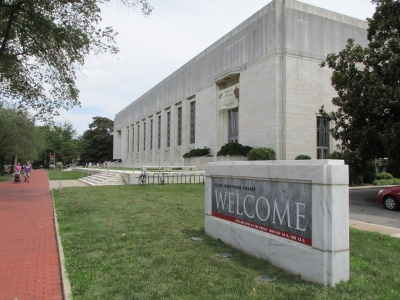
Finally, on the morning of Wednesday, July 16, 2014, David and I met in the waiting room of the Folger office, where we filled out the necessary paperwork to gain entry to the archives. We were then ushered into the awe-inspiring Reading Room, with its ornate chandeliers and polished woodwork3. For a moment, it didn't feel like we were in the United States -- it felt more like a museum in London or Paris. The atmosphere was one of reverence and respect for the Bard's work (and for those conducting their research), as we made our way through the famous collection of materials to a staircase that led down to the basement. On the bottom floor, at the far end of the building, we found the Steenbeck in a corner behind several rows of storage materials. The film had already been removed from cold-storage and was spooled onto the machine waiting for us.
As we started the film, we were immediately impressed with the image quality of the print -- it was in far better shape than the battered 35mm copy at UNCSA. As for variations, we noticed a few stray shots that might have been different, but in relying on our memories, it was impossible to catch EVERY change without a side-by-side comparison of both versions. That being the case, a notable difference we caught right away was a shot of the river containing the caption, "New Mexico 1967" -- an image that wasn't part of the New Line Cinema re-release. We were puzzled why Jack Good chose that specific year to set the story, since the finished film is an unmistakable product of the early 1970s. Perhaps 1967 still held some significance for him, since that was when he created the stage version which premiered the following year in Los Angeles. Stranger still, that same shot would then be removed from the re-release by 1975.
During the screening, David and I talked about the film's production and history, along with our experiences concerning it. I wish I had recorded the conversation -- it would have made a great DVD commentary track! At one point, Christy Desmet (keeping her promise to meet us) stopped in and viewed a few minutes of the film remarking, "The music sounds great!" By the time the film was over, David and I felt satisfied that we now knew the differences between the two versions, and that we hadn't missed out on anything crucial -- roughly 98% of the original was identical to the re-release.
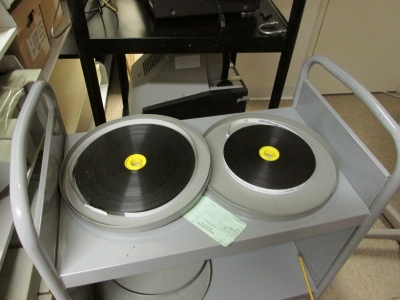
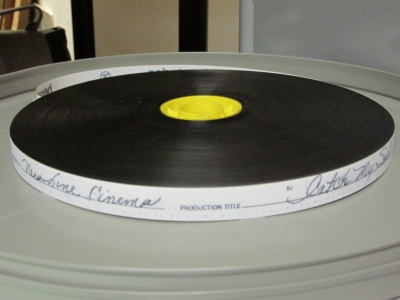
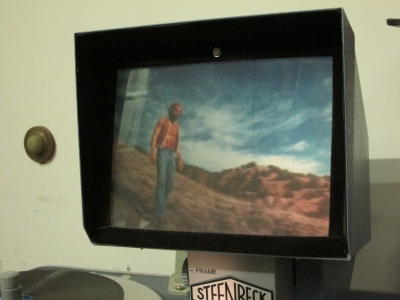
After finishing up, we thanked the Folger staff for their assistance and went out for a well-deserved lunch, where we updated each other on the developments surrounding the film, including stories of everyone we'd been in contact with, as well as our respective research. We agreed that it had been a productive afternoon, then parted ways, since David had a long drive back to North Carolina. I still had another day in town, however, and planned to enjoy more of the city as part of a mini-vacation. During a leisurely walk from the Folger Library to the Capitol Building, I was reflecting on the morning's screening when an interesting thought occurred to me. The last time I had been in Washington was for my middle school class trip in 1984. At that time, the print of Catch My Soul had been sitting in the Folger vault for seven years. My school's tour bus could have driven right past the Library, yet there was no way I could have known then that, thirty years in the future, I'd be returning to that building to view a copy of a strange film I didn't yet know existed. . .
BRIDGEPORT, CONNECTICUT
After the Folger trip, I mentally put aside Catch My Soul for the time being. David's prediction of "two to three years" before any possible restoration occurred seemingly wrapped things up for the foreseeable future. I settled back into my usual routine of work and life, while continuing to research and write about other film and TV projects. But to paraphrase a line from The Godfather, just when you think you're out, something pulls you back in. A mere nine months had passed, and that following April, Rick at The Unmutual again informed me that someone found my articles online and was asking to get in touch with me.
The message was from Brandon Upson of the DVD label Vinegar Syndrome (a.k.a. Etiquette Pictures), a company specializing in high-quality home video releases of rare cult and exploitation films. Our initial contact was on April 1st, but Brandon quickly assured me that what he had to say was no joke. Still, nothing prepared me for the news he had to share: that his company was in the process of restoring Catch My Soul for a DVD/Blu-ray release the following November! I was completely stunned. This was an incredible development that I thought would not happen for several years at least. Additionally, because of the previous research I had done on the film, Brandon asked if I would be willing to write the booklet and liner notes for the release. I told him I'd be happy to do so, and throughout his next several messages to me, he explained how this amazing project came to be.
It started when Joe Rubin, Etiquette's Director of Acquisitions, mentioned the film to the staff while they were considering various titles for restoration. "Joe told us how it was this lost rock opera that no one had seen in decades," Brandon recalled. "I then looked it up and found a wealth of information -- including the fact that hardly anyone had seen it! It looked like an amazing project, and after we listened to some of the soundtrack online, we realized it could be something special." Etiquette proceeded to make contact with the film's executive producer, Charles Fries (now in his mid-eighties), who still had connections at 20th Century Fox. Since buying out Metromedia in the late-1990s, Fox has owned the rights to Catch My Soul, and most importantly, a copy of the original negative. Thanks to Fries' assistance with the negotiations, Etiquette was able to secure licensing for a home video release, and Fox duly sent them the film elements needed to make it happen.
"As far as the print that we're using," Brandon told me, "it's the actual picture negative straight from the camera. It's eleven reels, roughly 1,000 feet per reel. It's definitely the best preserved of the versions, with no 'vinegar syndrome'4, and not much in terms of hard damage." The Etiquette team made an online "screener" copy from this source, which they then forwarded to me. This was invaluable to have while writing the DVD essay, since I now had access to the film whenever I needed, and no longer had to rely on my memories of the previous times I had seen it. Examining the film in detail, I noticed an occasional shot that had a slight red or yellow tint (along with the inevitable specks or grain here and there), but overall the picture quality was remarkable. If the condition of the negative was this good prior to any cleaning, then the finished restoration would look absolutely phenomenal. Brandon provided some technical details: "The restoration program we use is PFClean (Pixel Farm). As for bringing an image out from the scratches, dirt, and general wear, it can't be beat. For color, we use DaVinci Resolve and specifically calibrated monitors to make sure the colors are as close to both the director's and the director of photography's vision as possible."
When Brandon sent the screener, though, he warned me about a "surprise" waiting at the beginning of the film. His team made a slightly startling discovery when viewing the negative for the first time. Although the storage cans containing the film (as well as the "leader" at the beginning of the first reel) were all labeled Catch My Soul, the title onscreen surprisingly said Santa Fe Satan! Apparently, when the name was changed for re-release after the film's failure in 1974, someone made the questionable decision to perform the alteration on the actual negative rather than on a copy. The title appears over a shot of the bus driving across the desert, and upon closer examination, I detected a glitch where the image turns slightly grainy a second before the title fades in. This marks the point where the original name was cut out and the new one spliced in. It is almost inconceivable to think that the producers (or a team of anonymous editors) would have so little regard for the film that they would cut directly into the original negative. Granted, we're only talking about a few seconds of footage, but it's frustrating nonetheless.
Thankfully, the Catch My Soul title is still present at the beginning of the 16mm print at the Folger Shakespeare Library. I told Brandon about this copy and he was interested in somehow acquiring it, but sadly could not get it in time for the DVD release. Perhaps it's just as well, since there would have been difficulties in trying to "fix" the title. First would be the incompatibility between the two prints -- attempting to enlarge a 16mm frame to 35mm would result in a grainy image and a loss of picture quality. Second, the 16mm copy is cropped on both sides of the frame, similar to the old "pan-and-scan" process for VHS videotapes and pre-digital 4:3 television screenings. Again, this would result in an awkward transition if this sequence were to be inserted into the 35mm widescreen print. Regardless, it's heartening to know that the original version exists SOMEWHERE at least.
During our conversations, I was pleased to learn that Etiquette Pictures was located in Bridgeport, Connecticut, about an hour's drive from my hometown of Carmel, New York. I had been planning a trip back there anyway, so Brandon invited me to come by if I was going to be in the area. Once again, another great opportunity presented itself, and we began making plans to meet up. Eventually, on the morning of Tuesday, June 23, 2015, I arrived outside a nondescript warehouse a few blocks from the Bridgeport waterfront. Brandon greeted me at the door and showed me upstairs to the place where Etiquette prepares and unleashes their obscure treasures upon the world. Their facilities wind through a shadowy network of rooms and passageways covering the second floor, where the walls are adorned with classic film posters, and the tables are covered with cinema equipment and entertainment memorabilia. Most impressive are the numerous computers in various rooms running constantly with digital-editing and film-restoration programs.
I was introduced to the rest of the staff, who were all friendly and understandably enthused about the film's upcoming release. At one computer sat Ryan Emerson, co-founder of Etiquette and its Director of Production, who kindly showed me a few minutes of the completed restoration of Catch My Soul. While the unrestored negative was impressive to begin with, this final result was truly stunning. The clarity and colors jumped off the screen as if the movie was filmed yesterday. There was now no doubt that the DVD and Blu-Ray would look amazing. I then met James Neurath, Etiquette's head archivist, who I learned went through quite an adventure to save the film's soundtrack. Apparently, several reels of magnetic audio tape had arrived from Fox covered in four decades of mold. Brandon revealed how James had to clean each of the reels by hand. "It was a tedious process," he recalled. "Each 1000-foot reel was manually cleaned with a special fine cloth (so as to not scratch anything), using a minimal amount of pressure to slowly take the mold off. It took roughly six to eight hours per day for about a week, but it was worth it. The sound came out fantastic, as many will hear on the Blu-ray." Finally, Brandon showed me a large warehouse-like room where they store the actual film prints during restoration. He led me over to one shelf and pointed out a true Holy Grail as far as I was concerned -- the film cans containing the camera negative of Catch My Soul. Holding them in my own hands, I felt honored to have now been in the presence of three different prints of this amazing film.
Throughout the visit, we discussed our respective roles in restoring and documenting the film and how remarkable that it was about to have a long-overdue home video release. Our ramblings then evolved into a true "geek-fest" where we discussed our mutual appreciation of obscure film and television. The staff only knew of The Prisoner in passing, but they were familiar with McGoohan from his appearances in Escape From Alcatraz, Scanners, and Braveheart. Appropriately, Brandon was also a fan of Breaking Bad, and was interested to learn how I had visited the show's locations, along with those for Catch My Soul, while in New Mexico. As a generous gift (and a bit of a "thank-you" for writing the DVD booklet), the staff presented me with a stack of films containing some of Etiquette and Vinegar Syndrome's previous releases. They were obscure titles from the 60s and 70s, including The Candidate, Johnny Gunman and A Labour of Love. I hadn't heard of any of them, but was nevertheless looking forward to checking them out. The excellent quality of the packaging and disc labels immediately caught my eye -- if the presentation looked good for these DVDs, then the release for Catch My Soul promised to be just as amazing! With the restoration now finished, all that was left was to wait out the next five months. . .
MEET MICHAEL CASSIO
In the meantime, yet ANOTHER notable development occurred: less than two weeks before the DVD came out, I got to see Tony Joe White in concert. He appeared on a double bill with the group Blue Highway at the Bijou Theater in Knoxville, Tennessee on November 5. He played for over an hour, showcasing several songs from his latest album, Hoodoo. Appropriately, he followed up the new stuff with blistering renditions of his classics "Polk Salad Annie" and "Roosevelt and Ira Lee." At age 72, he shows no signs of slowing down, having grown into the elder bluesman he always sounded like even when he was young. Afterward, I got to meet him thanks to his son Jody and their assistant Kristin. We had been in contact some months earlier, when they arranged for Tony Joe to answer several questions via email regarding the film. Now, they were again of invaluable help in scheduling an opportunity to meet the man himself.
I found Jody backstage after the show, where he led me out a side door and pointed to Tony Joe. He was sitting on a staircase, relaxing with a cigarette and a glass of wine, talking to his drummer. I introduced myself and saw a flash of recognition in his eyes when he realized who I was. He broke into a big smile and said to his band mate, "This is the guy who's been writin' about the movie I was in with Richie Havens. Man, what a trip that was!" I complimented him on how great he sounded that evening, as well as how much his music from the Catch My Soul soundtrack inspired me to research the film. We expressed amazement at both its impending arrival on DVD, and that we should finally meet in person just before its release. I showed him my snapshots of the filming sites, and he smiled at seeing the locations again four decades later. "New Mexico," he mused, while flipping through the photos, "that's where it all went down . . ." He was likewise interested to hear about the others I had contacted who worked on the film. "You know, I can't believe that movie was gone for so long," he said. "I appreciate everything you and everyone else did to bring it back." Our meeting was a perfect end to the evening, as well as an appropriate sense of closure for me, after three years of research on the film. As we parted, I realized if there's one person the word "cool" can truthfully describe, it's Tony Joe White.
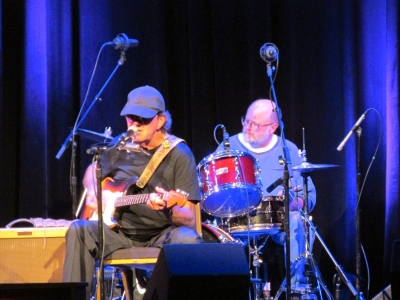
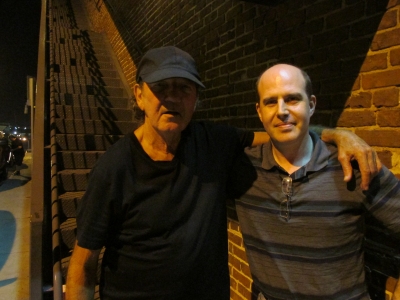
SOMETHING OF A REVELATION
In the introduction to Part One of this article, I stated that Catch My Soul was impossible to see due to the lack of any home video releases. I am happy to say that is now no longer the case. On Tuesday, November 17, 2015, Etiquette Pictures released the remastered film in a special DVD/Blu-ray combo pack loaded with extras, including a "making-of" featurette, a new interview with Tony Joe, a profile of cinematographer Conrad L. Hall, the original theatrical trailer, a vintage TV spot and a still gallery of images from the film. Likewise, the packaging (with reversible cover art) proudly stated that the movie was "Scanned & Restored in 2K from the 35mm Camera Negative." Without a doubt, Etiquette went beyond expectations to make this release as great as it could possibly be. Ryan Emerson stated in a press announcement that the film "was a deeply personal project for its director, McGoohan, writer, Good, and producer, Fries. It's extremely exciting to finally bring this unjustly lost film to home video."
Word of the release began to spread as soon as Etiquette broke the news in mid-September. The timing was appropriate, since the company was already receiving recognition from their first two releases -- deluxe Blu-ray sets of James Harris's 1973 film Some Call It Loving, and the 1971 documentary about Dennis Hopper, The American Dreamer, both of which had also been long unavailable on home video. A message from a reader on the Etiquette Facebook page said, "I'd never heard of [Catch My Soul] until today . . . major thanks to you guys. First The American Dreamer and now this? [You're a] force to be reckoned with." Meanwhile, at Blu-ray.com, reader's comments ranged from, "This is a must-buy blind purchase. I love movies like this from the 1970s," to "I know nothing about this [film], but I'm very, very intrigued. Will definitely have to check it out!" A third commenter simply announced, "Day One purchase for me!"
By the time the Blu-ray was released in November, the reviews were overwhelmingly positive. Rob Hunter of Film School Rejects said, "[The film] is an oddity, but a fascinating one . . . [The] music is catchy, immersive, and pairs well with the desert landscapes . . . while it's a bumpy ride at times, it's also a terrific glimpse into a previously lost history." Gary Tooze of DVD Beaver remarked, "It took me a while to get into it . . . but eventually I was hooked. It is totally unique . . . [the] production carries its own style and charisma. Not a film for everyone (I wouldn't say it's a good film!) but we strongly recommend, regardless." Nathaniel Thompson at Mondo-Digital stated, "[The film] looks fantastic, with no quibbles whatsoever given the excellent condition of the source material and the rich, impressive quality of the transfer . . . All in all, a nearly miraculous salvage job for a fascinating film bound to find some devoted new followers." Third Eye Cinema observed, "Despite the mess it may sound like on paper . . . [it's] filled with dramatic, powerful music and intense performances . . . [it's] the best thing we’ve seen from Etiquette Pictures by far, and I’d be willing to bet they'll have a hard time topping this one for some time to come." Finally, Phil Hall of The Examiner was emphatic in his praise. "The production offers a bold and audacious force of imagination that rarely exists in film musicals of any era," he said. "Catch My Soul is so refreshingly unusual that it becomes a hypnotically invigorating experience. The film's return after being gone for too many years is champagne-worthy -- and, with luck, a new generation of film lovers will experience and champion this grand experimental endeavor."
Those I had collaborated with were equally excited about the release. Brandon Upson at Etiquette stated, "We feel that Catch My Soul will captivate a new audience in a way that it couldn't do forty years ago. It's not every day that a once-thought-lost rock opera is shown to the world again. Fans of cinema will appreciate the great filmmaking in it, while admirers of film music will appreciate the soundtrack -- it grabs any fan of gospel, blues, rock and even Broadway musicals in a way that hasn’t been seen in a while." Meanwhile, Rick Davy at The Unmutual said, "When I first learned that prints of Catch My Soul existed, my heart skipped a beat. Whilst many people lament over the lost screen appearances of Patrick McGoohan, I have found his work behind the camera to be of equal merit. His skill as a director not only presents the viewer with more than what appears to be on the screen, but an impression that there is more than that which meets the lens! The release of Catch My Soul not only goes a long way in fulfilling the need for more unreleased material of McGoohan's, it also fills a gap in the history of inventive filmmaking." Then, Doug Magnus who worked on the film in 1972 said, "It's the miracle that we've been hoping for. All along I've kept the faith that it would finally come out. I'm very excited about it and it's a sense of fulfillment that the circle is finally complete in a way."
Another circle was completed when I asked film archivist Bradley Reeves what he thought of the release (thus ending this saga back where it began, since it was he who helped get me on the trail of the film three years earlier). "I think it's a triumph of determined detective work and painstaking preservation efforts," he said. "So much of our silent film heritage has been permanently lost over the years due to neglect and decomposition, while the B-movies, cult films, and drive-in productions of the 1970s are equally in danger. Catch My Soul was the perfect example of a modern-day lost film, but the rediscovery of an original negative proves that the occasional happy ending is still possible. I'm glad that this long-lost title can be seen again in pristine condition."
As for myself, it's an exhilarating and gratifying feeling to know that EVERYONE can now enjoy this remarkable film. No longer is it an obscure rarity beyond the reach of the curious viewer. Still, forty years is too long for one film -- any film -- to go unseen. With so many titles lost or missing, it's always satisfying when one more can be found and made available. I'm reminded of an observation made by film critic Anthony Lane of The New Yorker. "Whenever possible, pass sentence on a movie the day after it comes out," he said. "Otherwise, wait fifty years. Films are most plausibly assessed in either the heat of the moment or with the icy advantage of the long gaze . . . [cinema] is both news and history, but it takes a long while for one to ripen into the other."5 In this case, Catch My Soul's absence spanned nearly the entirety of Lane's projected fifty years, having been inadvertently propelled into that "long gaze" of the future from virtually the moment of its release.
In a way however, this may have actually helped the film in the long run. The neverending pop-cultural whirlpool of cinema, television and music makes it difficult for audiences to absorb every offering at the time of its release. It might take years before one finds the opportunity or inclination to view a film or TV series that they missed the first time around. Furthermore, when something is new, it is next to impossible to get the proper perspective on it. Viewing a release years later in an objective setting divorced from its original context can result in a more rewarding experience. We can better appreciate an offering that has aged particularly well or, at the other extreme, see through a weak effort for what it truly is once the original hype has died down. This scenario might have worked then to the advantage of Catch My Soul -- after its original negative reviews in 1974, perhaps the film NEEDED to go unseen for forty years in order to be properly reevaluated and appreciated.
If you've been interested enough to read this far, most likely you've already acquired the new Blu-ray. While watching it, spare a thought for those who worked hard on the film so long ago -- their efforts are finally being appreciated on a scale that simply wasn't possible before. Jack Good, who today lives in quiet retirement outside London, should be pleased that his work is receiving this long-overdue recognition. "[It] was something of a revelation, going to see Othello [at age nine]," he said in 1972. "[It] had an impact on my life. It made all the difference."6 The fact that he was inspired enough to see his "revelation" through numerous stage versions, two soundtrack LPs and a feature film is a testament to his faith in the project. Likewise, it is just as much of a revelation for us today that the film is finally available, exactly 75 years after he was first inspired by its source material.
"I'm just approaching [Catch My Soul] the same way I approach music," Richie Havens said during filming. "I follow it. When it starts to happen, I just go that way . . . [and] usually it's all right. Somebody up there who's leading us is good, really good."7 Without a doubt, Catch My Soul has the uncanny ability to lead. From the original cast and crew who created it, to those behind the scenes today who preserved and documented it, to those who are enjoying the new DVD -- this film, in some way, spoke to all of us. It led us and we followed, contributing in some way to its remarkable journey. Though it might have taken a few decades longer than originally intended, it's safe to say that that journey is now complete.
------------------------------
1. All quotes are from conversations, correspondence and interviews with the
author unless otherwise noted.
2. Lewis, Dan. "McGoohan Back in A Weekly Series." Santa Cruz Sentinel
(October 28, 1977).
3. A remarkable account of the life of Henry Clay Folger that documents his
collecting of Shakespeariana (including 82 copies of the First Folio!), along
with the planning and construction of the Folger Shakespeare Library, can be
found in Andrea Mays' excellent book, The Millionaire and The Bard (Simon &
Schuster, 2015).
4. In the early stages of the chemical breakdown of film, the celluloid gives
off the scent of vinegar. If not saved in time, the film will eventually rot
away.
5. Lane, Anthony. Nobody's Perfect: Writings From The New Yorker. Alfred A.
Knopf, 2002.
6. Kilday, Gregg. "Madness, Shakespeare and Manson Join Hands in Santa
Fe." Los Angeles Times (November 26, 1972).
7. Kilday.